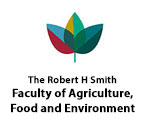Citation:
Abstract:
New techniques to estimate the extent and persistence of soil water repellency (SWR) were compared with commonly used techniques in assessing the results taken in the long-term agricultural experimental orchards in northern Israel irrigated with either freshwater (FW), primary treated wastewater (WW) or (secondary or tertiary) treated wastewater (TWW), where SWR induced by irrigation was registered (Ha Ma'apil, Neve Etan, and Shafdan). The extent of SWR was assessed by the repellency index RI, combined repellency index RI c and modified repellency index RI m . The persistence of SWR was assessed by the water drop penetration time WDPT and water repellency cessation time WRCT. Soils from different textural classes were classified as slightly to strongly water repellent according to WDPT or RI values. Relationship between RI c and RI values can be well fitted by the linear equation, i.e., RI c could be a good substitute for RI. Relationships between WRCT and WDPT values as well as RI m and RI c or RI values cannot be accurately described by the linear equation, i.e., RI m is not a good substitute for RI for the values taken in this study. © 2017 Institute of Botany, Slovak Academy of Sciences 2017.

